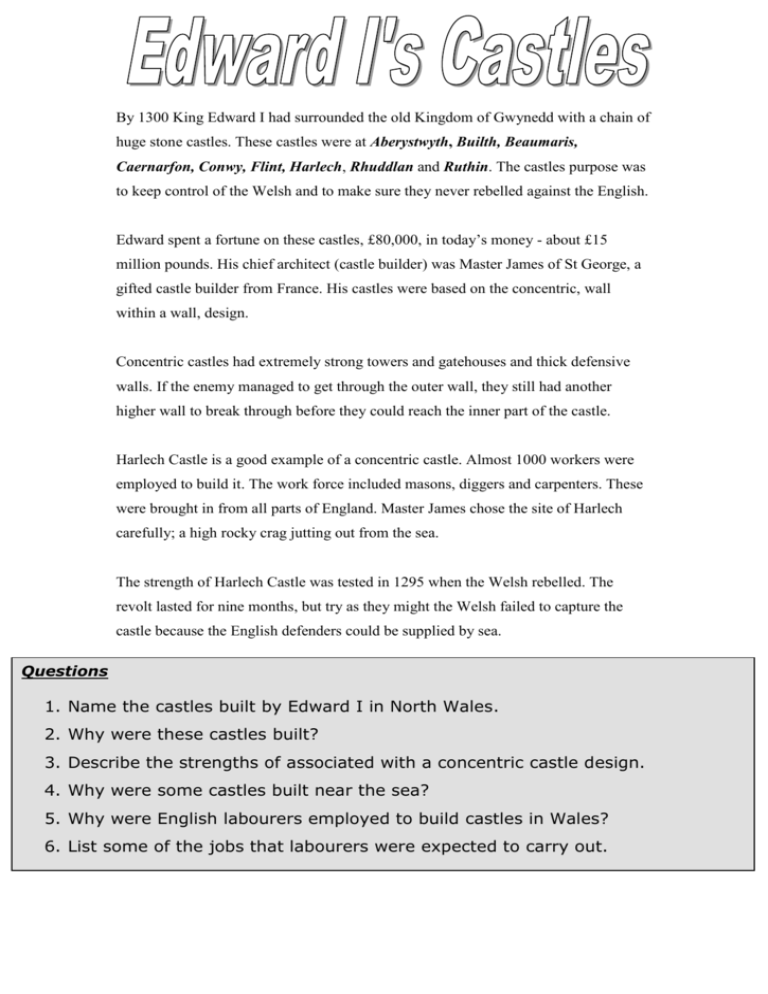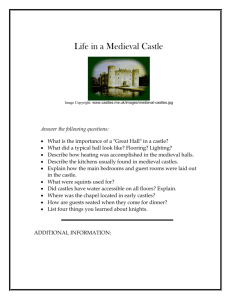ExtraInfo_IdCastles
advertisement

By 1300 King Edward I had surrounded the old Kingdom of Gwynedd with a chain of huge stone castles. These castles were at Aberystwyth, Builth, Beaumaris, Caernarfon, Conwy, Flint, Harlech, Rhuddlan and Ruthin. The castles purpose was to keep control of the Welsh and to make sure they never rebelled against the English. Edward spent a fortune on these castles, £80,000, in today’s money - about £15 million pounds. His chief architect (castle builder) was Master James of St George, a gifted castle builder from France. His castles were based on the concentric, wall within a wall, design. Concentric castles had extremely strong towers and gatehouses and thick defensive walls. If the enemy managed to get through the outer wall, they still had another higher wall to break through before they could reach the inner part of the castle. Harlech Castle is a good example of a concentric castle. Almost 1000 workers were employed to build it. The work force included masons, diggers and carpenters. These were brought in from all parts of England. Master James chose the site of Harlech carefully; a high rocky crag jutting out from the sea. The strength of Harlech Castle was tested in 1295 when the Welsh rebelled. The revolt lasted for nine months, but try as they might the Welsh failed to capture the castle because the English defenders could be supplied by sea. Questions 1. Name the castles built by Edward I in North Wales. 2. Why were these castles built? 3. Describe the strengths of associated with a concentric castle design. 4. Why were some castles built near the sea? 5. Why were English labourers employed to build castles in Wales? 6. List some of the jobs that labourers were expected to carry out.






